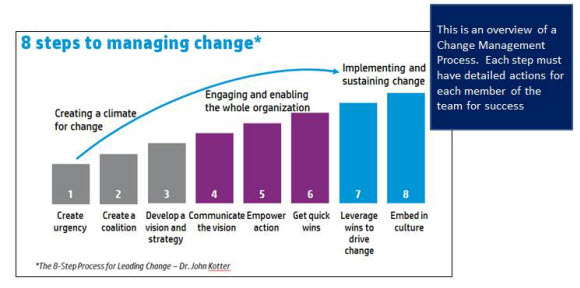Hanging up from your recent round of Sales Manager weekly meetings you realize something. The sales process you rolled out mid-year to increase sales isn’t working. In as little as one quarter, sales and morale are down. You are considering abandoning the process. Yet last year the sales management program you did implement is producing results. You followed the same program with sales process as you did with sales management. Sure some things are different on your team this year than last year. But how can it turn bad so quick? So you ask yourself:
Why do some solutions work and others don’t?
 The answer: It is all about the timing.
The answer: It is all about the timing.
- Timing of the sales organization to accept the change
- Timing of having the right support from the correct roles
- Timing of getting the experienced leaders in the organization to back your initiatives
Download our Solution Timing Assessment.
It asks and answers the following questions:
- Can your company actually accept and implement a change?
- Do you have executive support to drive it through the organization?
- Are the sales leaders talented enough to implement the change needed?
There are three criteria every Sales VP must have to ensure the proper timing:
- Executive Support: The most important part of any initiative is executive support. In most organizations this means the CEO. We have witnessed repeatedly how real change falls flat without top down support. Involving the executives requires setting up the project to succeed. Establishing an Executive Sponsor, a daily project manager and an overriding steering committee are critical. This involves multiple people who have a stake in the initiatives success. The Solution Timing Assessment explains these in detail. Remember, if it’s a big deal to them it has a chance to be successful.
- Follow a Strict Change Management Process: Too many times projects fail because of the execution. Adopt a change management process like the picture below. It helps make sure each step is sequenced and timed properly. Make sure each role on the project team has defined tactics for the steps. And identify when you advance from one step to the other. You don’t want to go to fast. Trying to speed through the change is where most projects fail.

- Pick Strong Leaders: Initiatives’ take on lives of their own. Most of your experienced sales people don’t want to change. Having a strong executive sponsor and project leader will get the solution adopted. Some of the advocate’s key roles:
- They can run the game plan for the project and complete their day jobs
- They can fix something quickly that’s not working
- They will lead by example by using the solution everyday
- They are accountable to the solutions success
Pick them to be not only on the team but in the field. The adoption comes in the everyday activities between sales reps and customers.
Look at these three criteria as you assess the timing of your project. Missing one can sink any project or initiative. As the Sales VP, your number depends on it.
Case Study
A well-established $2 billion dollar manufacturing company needed to improve revenue. Their industry was shrinking. The current organization structure was not matched to the changing market conditions. As a result, they were shrinking with the industry. The CEO and Sr. VP of Sales decided they needed to reorganize the sales team.
They established 5 major project team roles to increase the success of this project:
- Steering Committee: This team makes go-forward decisions and provides strategic direction of the project.
- Executive Sponsor: This person owns the project and reports directly to the Steering Committee.
- Project Manager: Manages the day to day activities of the project. They make sure all activities and resources are available.
- Project Members: A mix of sales and marketing people in the organization who execute.
- Quality Assurance Team: They review the work quality and adoption metrics ensuring success. They also provide guidance if actions need to change.
One year later over $2 million dollars had been spent. Win Rate and Average Deal Size increased. Sales Cycle Length decreased. Revenue was up despite continued industry shrink. The key success was an adopted solution. That was the result of a successful project that helped sales people sell more business.
Factor your timing and roles of key player into all sales improvement efforts. Resist the urge to start a new project without considering the three criteria above. It might not only cost you sales. It can kill your sales team within 90 days.
Download our free Solution Timing Assessment.




